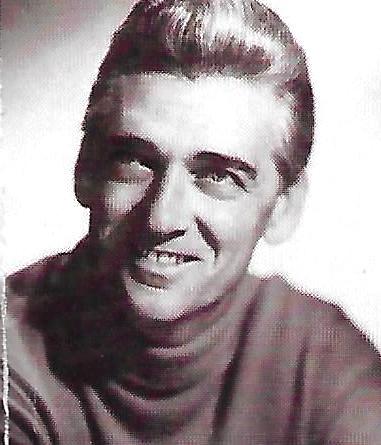Carl Smith - From Union County to Mr. Country - Part 3
Country Connections By James and Ellen Perry
Carl Smith’s talent and good looks took his career in country music into a four-year, 190-episode TV show called “Carl Smith’s Country Music Hall” for Canadian Television, and was also syndicated in the USA. The show ran from 1964 until 1969.
Carl’s television show was appreciated by men and women of all ages. Ladies especially liked Carl because he was tall and handsome with wavy black hair and blue eyes. Carl was very courteous and had easy going mannerisms and a smooth voice. Carl had it all, as Mrs. Ruth White said.
Carl’s first number one country hit charted October 27, 1951. It was “Let Old Mother Nature Have Her Way.” His second number one hit charted on March 1, 1952. It was “When You Feel Like You’re In Love, Don’t Just Stand There” written by Ernest Tubb.
His third number one hit charted May 24, 1952, which was “Are You Teasing Me,” written by Ira and Charlie Louvin. Carl’s fourth number one charted on July 25, 1952, and still gets air play today. That song was written by Felice and Boudeleaux Bryant entitled “Hey Joe.” A big number one hit for Carl.
Carl’s fifth number one hit was recorded in 1953 by its writer Freddy Hart, but saw little success. Carl recorded it on September 5, 1954, and it went to number one on the country charts on November 6, 1954. It was Carl’s biggest hit of his career. The name of it was “Loose Talk.”
Two big things happened to Carl’s life and career in 1952. He and June Carter of the Carter family married and had one daughter, Carleen Carter, born on September 26, 1955. The couple divorced in 1956.
On February 5, 1952, Carl started putting together the Tunesmiths. After his first number one hit in October of 1951, he needed to start touring, as that was where entertainers made most of their income.
Carl first hired Johnny Sibert, who was an 18-year-old steel guitar player. Carl had heard Johnny play steel on a local radio show in Nashville. Johnny worked for Carl for the next 32 years. Carl and Johnny became lifelong friends.
Johnny Sibert, like Jerry Byrd, never played a pedal steel guitar. Johnny, like all the steel players of the 30’s, 40’s and 50’s, had his own style. As soon as Johnny kicked off a song on the radio you knew Carl Smith was going to sing.
Next, Carl hired Sammy Pruett, who had been Hank Williams’ guitarist. Sammy loved playing in Carl’s band because he got to do more guitar breaks in Carl’s recordings and shows.
Next came Junior Huskey on bass. Junior and Carl had become friends in Knoxville during their teen years.
Next was Buddy Harmon on drums. Remember, Roy Acuff didn’t approve of drums on the Grand Ole Opry. Buddy Harmon, being in Carl’s band, was causing problems with Roy Acuff, who never gave Carl any help at the Opry. This situation over Buddy Harmon playing drums was one of the reasons Carl left the Grand Ole Opry. The last band member Carl hired was Dale Potter on fiddle.
Carl left the Grand Ole Opry in 1957 and became the main star of the Phillip Morris Cigarette Show. After leaving the Grand Ole Opry and being divorced from June Carter, Carl met Argolda Voncille Hill, known to fans as Goldie Hill, who also joined the Phillip Morris tour. Goldie was a member of the Grand Ole Opry and had a number one country answer song to Perry Como’s pop version of “Don’t Let the Stars Get In Your Eyes,” that was a country hit by Skeets McDonald. Ray Price and Johnny and Jack also had top ten versions of that song.
The answer by Goldie was written by her brother Tommy Hill and was titled “I Let The Stars Get In My Eyes.” Goldie and her brothers Ken and Tommy performed on the Louisiana Hay Ride, Red Foley’s Ozark Jubilee and the Grand Ole Opry. Goldie and Carl had two sons and one daughter.
Carl and Goldie were married from 1957 until her death in 2005. Carl cared for Goldie during her bout with cancer and I was told he hardly ever left her bedside. Having met Goldie and Carl, I saw she was very devoted to Carl. She quit her music career to look after their children and their ranch while Carl toured and performed until his retirement in 1978.
During Carl’s career, he was number four from the top on the Billboard Country charts. Only Webb Pierce, Eddy Arnold and Hank Snow were ahead of him on the charts. Carl charted five number one hits, had 58 top forty hits and 21 reached the top 10.
Carl also had his Canadian-American TV Show “Carl Smith’s Country Music Hall” that ran from 1964 until 1969, producing 190 episodes. Carl Smith was inducted into The Country Music Hall of Fame in 2003. Not bad for a farm boy from meager beginnings in rural Union County, Tennessee. Carl became the ambassador for country music to the world and became known as Mr. Country. Thank you, Carl and Goldie, for being a class act.
Carl’s awards and plaques may be seen at the Union County Historical Society and Roy Acuff Museum.
- Log in to post comments
